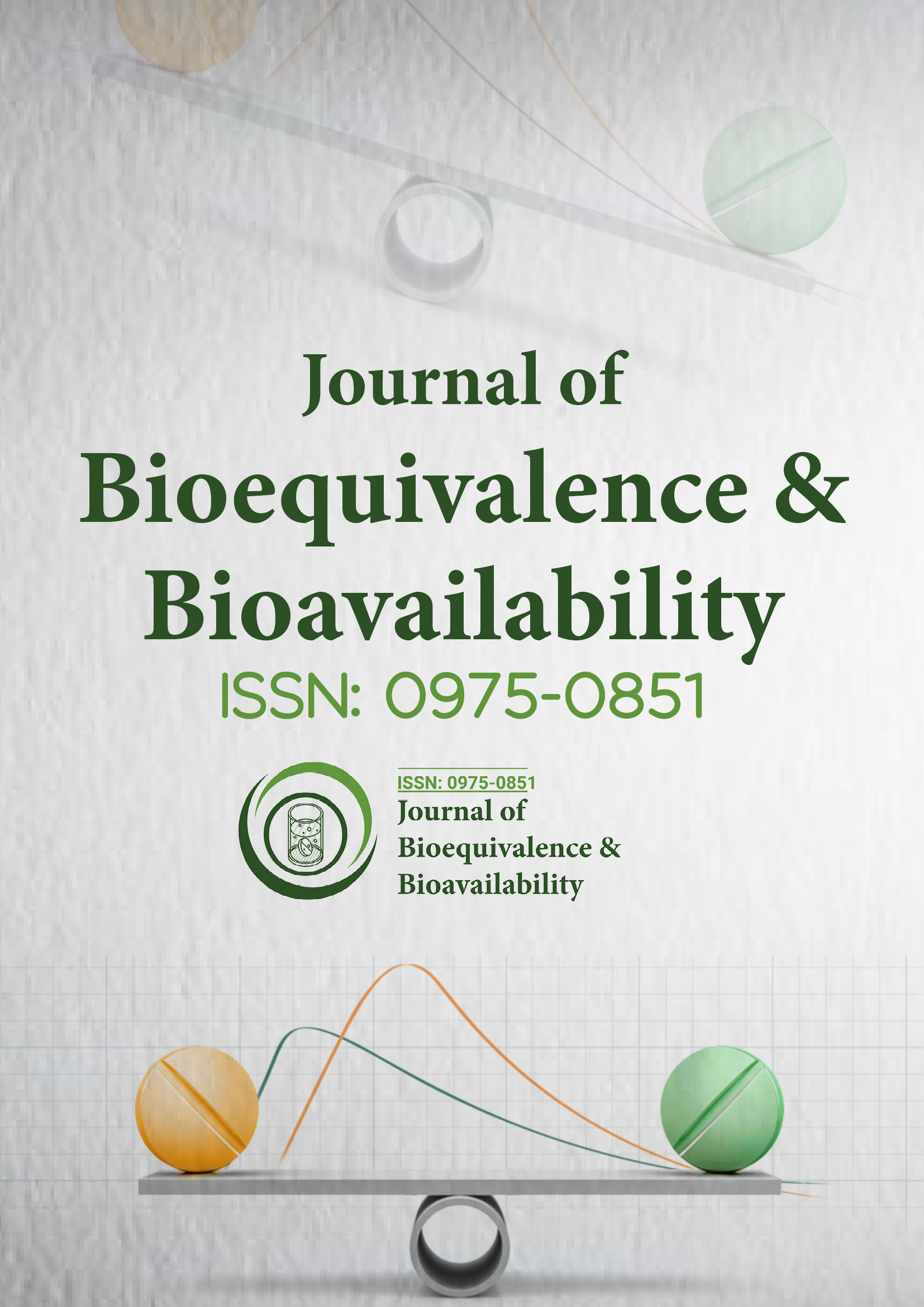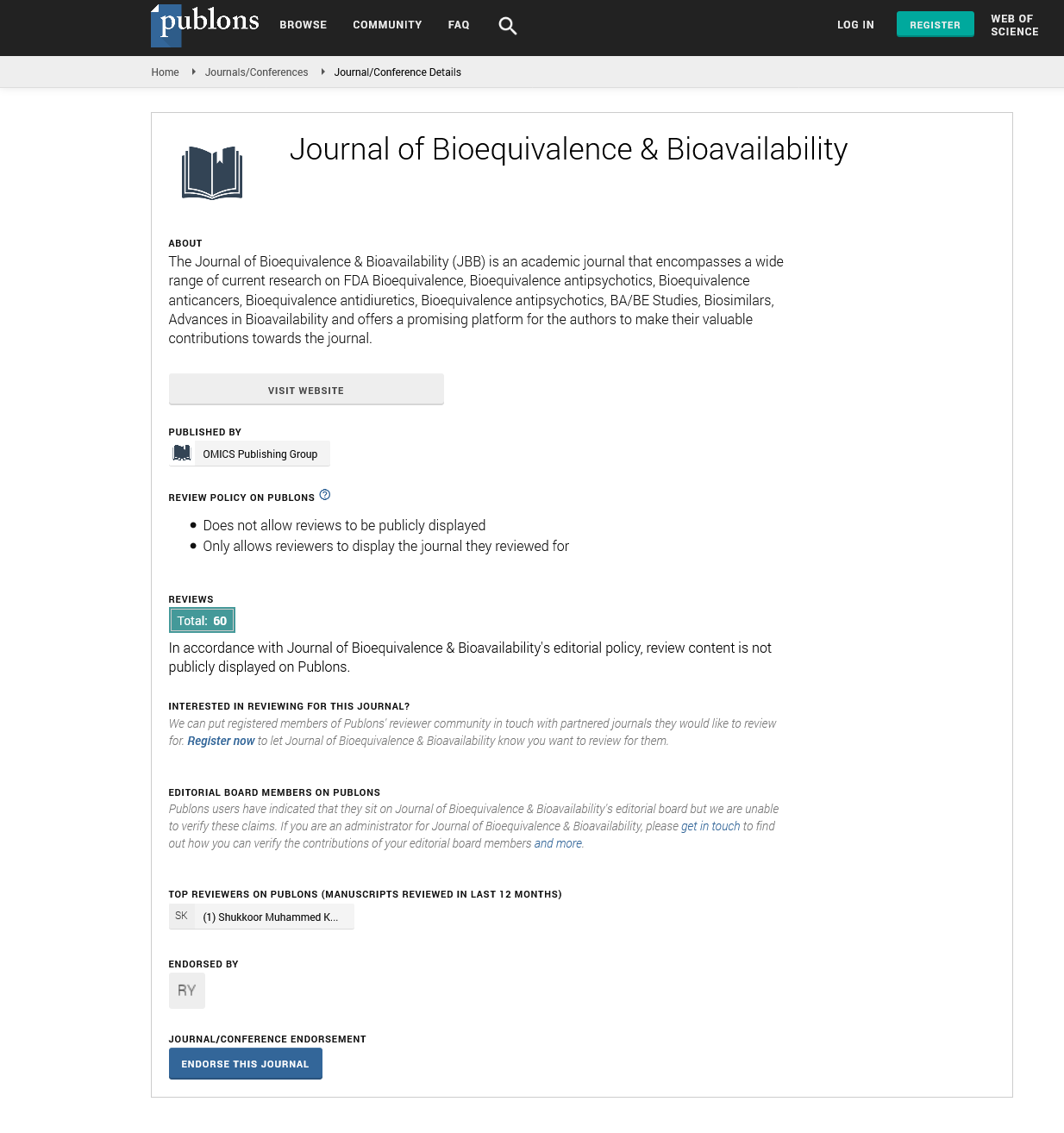Indexed In
- Academic Journals Database
- Open J Gate
- Genamics JournalSeek
- Academic Keys
- JournalTOCs
- China National Knowledge Infrastructure (CNKI)
- CiteFactor
- Scimago
- Ulrich's Periodicals Directory
- Electronic Journals Library
- RefSeek
- Hamdard University
- EBSCO A-Z
- OCLC- WorldCat
- SWB online catalog
- Virtual Library of Biology (vifabio)
- Publons
- MIAR
- University Grants Commission
- Geneva Foundation for Medical Education and Research
- Euro Pub
- Google Scholar
Useful Links
Share This Page
Journal Flyer

Open Access Journals
- Agri and Aquaculture
- Biochemistry
- Bioinformatics & Systems Biology
- Business & Management
- Chemistry
- Clinical Sciences
- Engineering
- Food & Nutrition
- General Science
- Genetics & Molecular Biology
- Immunology & Microbiology
- Medical Sciences
- Neuroscience & Psychology
- Nursing & Health Care
- Pharmaceutical Sciences
Perspective - (2025) Volume 17, Issue 3
The Science and Strategy of Pharmaceutical Formulation Development
Xiuxin Zhong*Received: 28-May-2025, Manuscript No. JBB-25-30138; Editor assigned: 30-May-2025, Pre QC No. JBB-25-30138 (PQ); Reviewed: 13-Jun-2025, QC No. JBB-25-30138; Revised: 20-Jun-2025, Manuscript No. JBB-25-30138 (R); Published: 29-Jun-2025, DOI: 10.35248/0975-0851.25.17.638
Abstract
Description
Formulation development is a fundamental stage in pharmaceutical research that transforms an Active Pharmaceutical Ingredient (API) into a safe, effective, and stable dosage form suitable for patient use. It bridges the gap between drug discovery and product commercialization, ensuring that the drug delivers the desired therapeutic effect with consistent quality. The process requires a deep understanding of physicochemical properties, biopharmaceutical behavior, and manufacturing feasibility to design a formulation that optimizes drug performance and patient compliance.
The ultimate goal of formulation development is to achieve an optimal balance between efficacy, safety, stability, and manufacturability. Each drug has unique physicochemical characteristics such as solubility, stability, particle size, and polymorphism, which influence its absorption, bioavailability, and therapeutic effectiveness. The selection of appropriate excipients, dosage form, and delivery system is therefore critical in determining the final product’s performance. Excipients, though pharmacologically inactive, play essential roles as diluents, binders, disintegrants, lubricants, and stabilizers, influencing the drug’s release profile and overall stability.
One of the primary challenges in formulation development is improving the solubility and bioavailability of poorly water-soluble drugs. Since a large proportion of New Chemical Entities (NCEs) exhibit low solubility, formulation scientists employ various techniques to enhance dissolution and absorption. Approaches such as solid dispersions, micronization, nanocrystal formation, lipid-based formulations, and inclusion complexes with cyclodextrins are widely used. These methods increase the surface area of the drug or improve its wettability, allowing better dissolution in gastrointestinal fluids and enhanced systemic availability.
The choice of dosage form—whether tablet, capsule, injection, suspension, or topical preparation—depends on the intended route of administration, drug properties, and therapeutic goals. For instance, oral dosage forms are the most convenient and widely used, but they require careful design to ensure consistent drug release and absorption. Parenteral formulations must maintain sterility and stability, while controlled-release or sustained-release formulations are designed to maintain therapeutic levels for extended periods, reducing dosing frequency and improving patient adherence.
Preformulation studies form the foundation of formulation development. These studies involve systematic evaluation of the drug’s physical, chemical, and mechanical properties to identify potential formulation challenges. Parameters such as melting point, solubility, hygroscopicity, pKa, partition coefficient, and compatibility with excipients are examined. The data obtained from preformulation studies guide the selection of excipients and the design of suitable manufacturing processes. Compatibility studies, often conducted using Differential Scanning Calorimetry (DSC) and Infrared Spectroscopy (FTIR), ensure that the drug and excipients do not react adversely during processing or storage.
Analytical characterization and stability testing are integral to formulation development. Stability studies conducted under various environmental conditions (temperature, humidity, and light) assess the product’s shelf life and determine appropriate storage conditions. Formulation scientists must ensure that the drug retains its potency and physical integrity throughout its intended lifespan. Regulatory guidelines, such as those from the International Council for Harmonisation (ICH), provide standardized protocols for stability evaluation.
In the development of generic formulations, bioequivalence studies are important to confirm that the new formulation performs comparably to the reference product. In vitro dissolution testing and in vivo pharmacokinetic studies provide evidence that the rate and extent of drug absorption are equivalent. Establishing bioequivalence ensures therapeutic consistency and supports regulatory approval.
Modern formulation development increasingly relies on advanced tools and modeling techniques. Quality by Design (QbD) has emerged as a systematic approach that emphasizes understanding processes and controlling variability from the outset rather than testing quality afterward. Computer-aided formulation design, predictive dissolution modeling, and simulation techniques enhance efficiency, reduce development time, and improve product reliability.
In conclusion, formulation development is a cornerstone of pharmaceutical science, ensuring that drug candidates become practical and effective therapeutic products. It integrates principles of chemistry, biology, and engineering to design dosage forms that are safe, stable, and patient-friendly. By combining traditional formulation strategies with modern technologies and regulatory insights, researchers can create innovative products that enhance bioavailability, maintain bioequivalence, and ultimately improve global healthcare outcomes.
Citation: Zhong X (2025). The Science and Strategy of Pharmaceutical Formulation Development. J Bioequiv Availab. 17:638.
Copyright: © 2025 Zhong X. This is an open-access article distributed under the terms of the Creative Commons Attribution License, which permits unrestricted use, distribution, and reproduction in any medium, provided the original author and source are credited.

